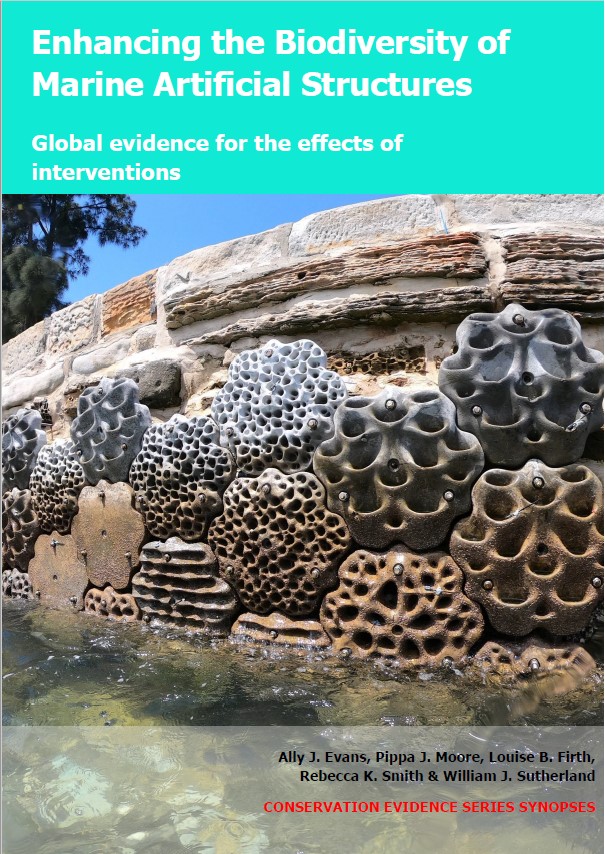Create small protrusions (1–50 mm) on subtidal artificial structures
-
Overall effectiveness category Awaiting assessment
-
Number of studies: 1
View assessment score
Hide assessment score
How is the evidence assessed?
-
Effectiveness
not assessed -
Certainty
not assessed -
Harms
not assessed
Study locations
Supporting evidence from individual studies
A controlled study in 1985–1989 on a subtidal breakwater block on open coastline in Toyama Bay, Japan (Watanuki & Yamamoto 1990) reported that small protrusions created on the block supported more kelp Ecklonia stolonifera but less canopy algae Sargassum spp. than a block surface without protrusions. Data were not statistically tested. After 42 months, there were 58 kelp individuals on the surface with small protrusions (wet weight: 1.09 kg) and 20 on the surface without (0.31 kg). There were 2–3 individuals of each of three other canopy algae species on the surface with protrusions (0.01–0.09 kg) and 3–18 of each on the surface without (0.05–0.17 kg). Small protrusions were created on a concrete breakwater block (2.3 × 2.3 × 0.8 m) by attaching 45 pebbles (diameter/height: 35–45 mm), evenly-spaced on a 644 × 529 mm horizontal surface. One adjacent surface had no protrusions. The block was placed on sandy seabed at 9 m depth in November 1985. Macroalgae on surfaces with and without small protrusions were counted and weighed (wet weight) after 42 months.
Study and other actions tested
Where has this evidence come from?
List of journals searched by synopsis
All the journals searched for all synopses
This Action forms part of the Action Synopsis:
Biodiversity of Marine Artificial Structures
Biodiversity of Marine Artificial Structures - Published 2021
Enhancing biodiversity of marine artificial structures synopsis





)_2023.JPG)














